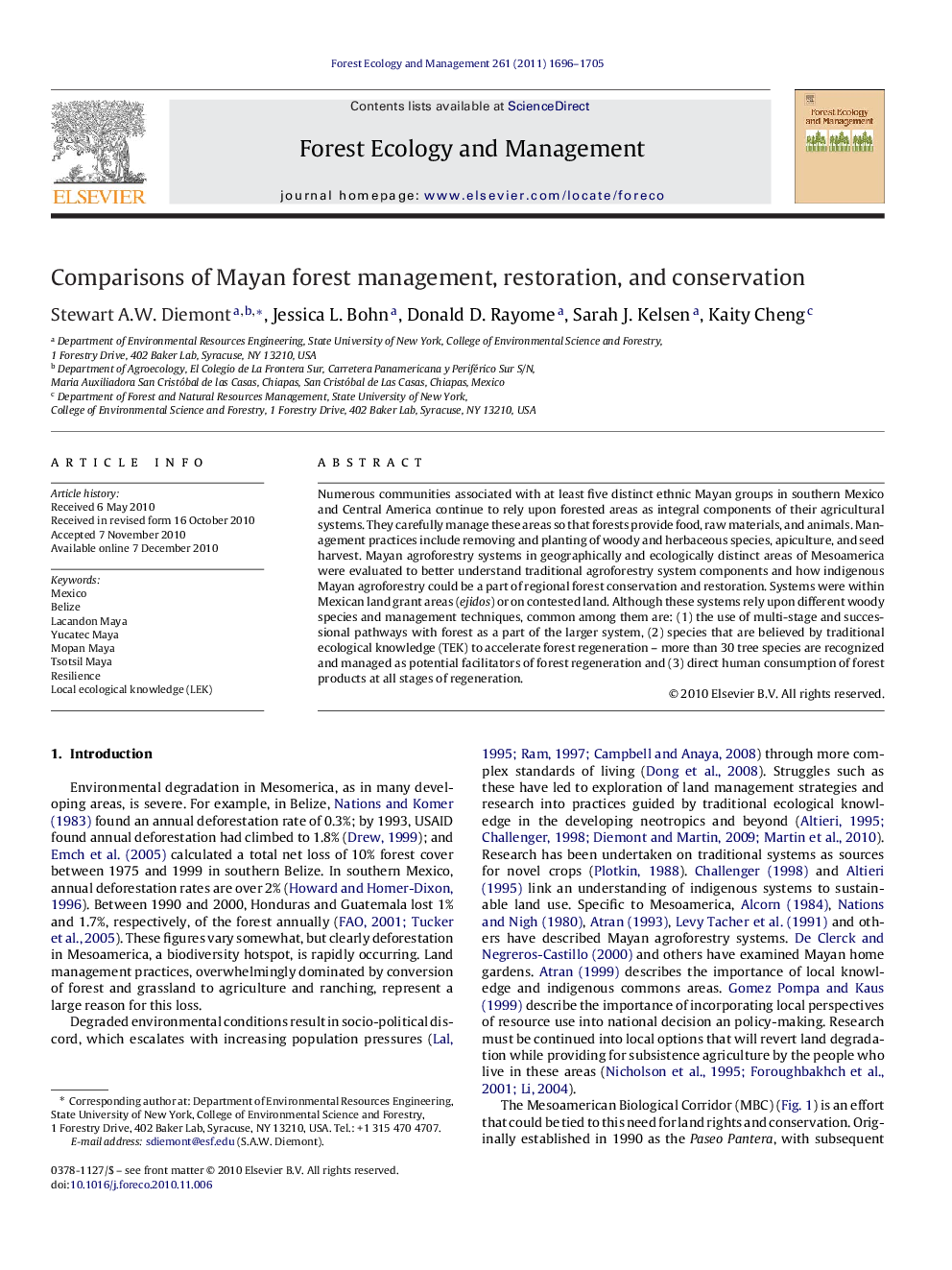| Article ID | Journal | Published Year | Pages | File Type |
|---|---|---|---|---|
| 88054 | Forest Ecology and Management | 2011 | 10 Pages |
Numerous communities associated with at least five distinct ethnic Mayan groups in southern Mexico and Central America continue to rely upon forested areas as integral components of their agricultural systems. They carefully manage these areas so that forests provide food, raw materials, and animals. Management practices include removing and planting of woody and herbaceous species, apiculture, and seed harvest. Mayan agroforestry systems in geographically and ecologically distinct areas of Mesoamerica were evaluated to better understand traditional agroforestry system components and how indigenous Mayan agroforestry could be a part of regional forest conservation and restoration. Systems were within Mexican land grant areas (ejidos) or on contested land. Although these systems rely upon different woody species and management techniques, common among them are: (1) the use of multi-stage and successional pathways with forest as a part of the larger system, (2) species that are believed by traditional ecological knowledge (TEK) to accelerate forest regeneration – more than 30 tree species are recognized and managed as potential facilitators of forest regeneration and (3) direct human consumption of forest products at all stages of regeneration.
Research highlights▶ 30 tree species used by 5 Mayan communities for forest restoration. ▶ Succession in studied Mayan agroforestry is highly managed. ▶ All Mayan communities produced food and raw materials at all successional stages.
